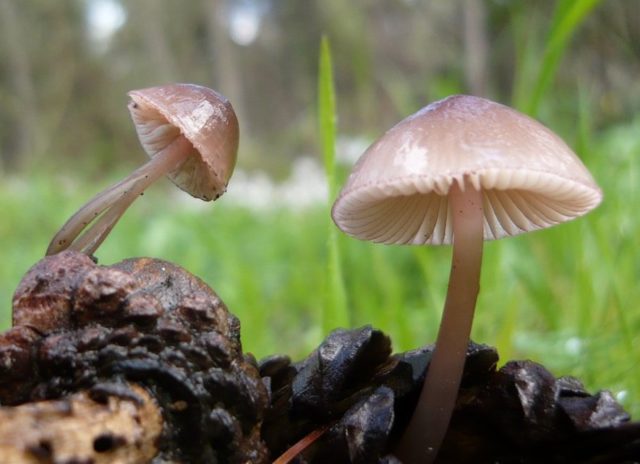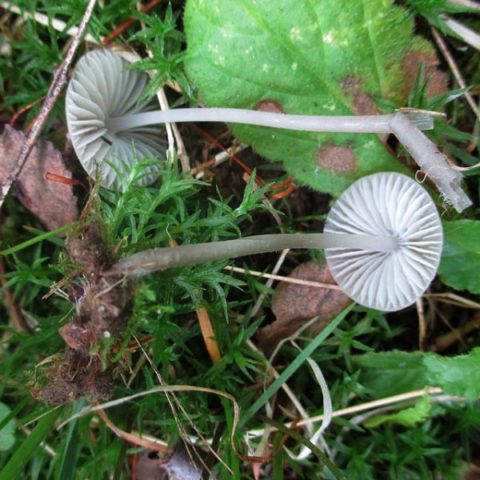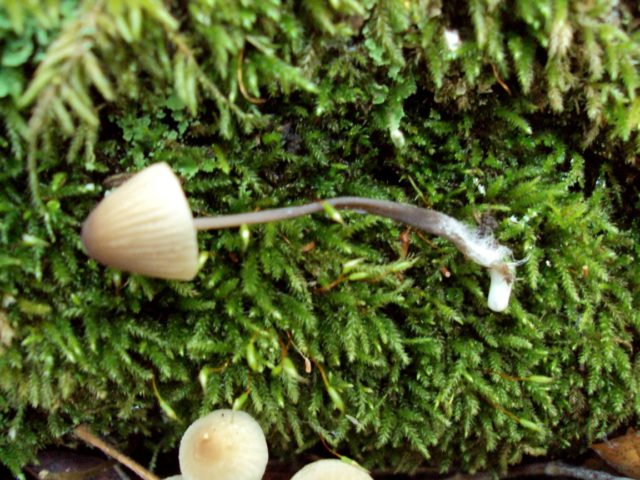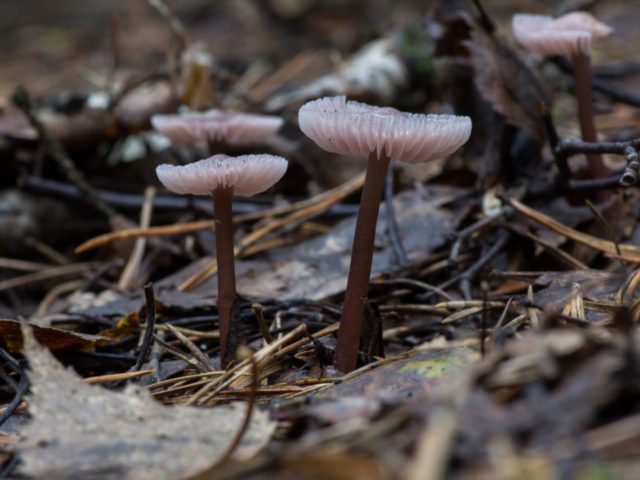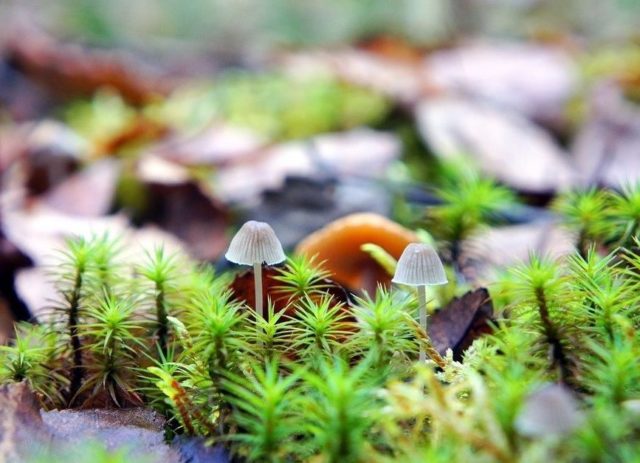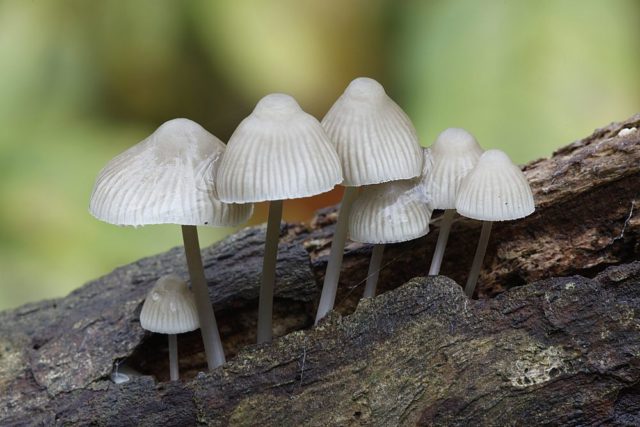Content
In the forests, among the fallen leaves and needles, you can often see small grayish bells - this is the milky mycena. The cute mushroom is edible, but shouldn't be used for soup. The fruiting body is not "fleshy", the cap is thin. It can often be confused with other species of the genus, which are generally poisonous.
What dairy mycenae look like
Scientists attribute this mushroom to the Agaric (Lamellar) group. These are the species in which the lower part has plates, approximately the same as those of the russula known to all. Milk mitcena can be distinguished by several criteria:
- Size, shape and color of the cap.
- The number and location of the plates.
- The properties of the pulp.
- Features of the leg.
- Milky juice on a cut.
The mushroom is small in size, on a thin stem. The diameter of the cap is from 1.5 to 2 cm. It is conical in shape, or similar to a bell. The older the fruiting body, the more the cap flattens, its edges can bend upwards, but a tubercle still remains in the center. The surface color is brownish or gray, more saturated in the center, becoming very light towards the edges. The top is not shiny, but the matte surface is slightly translucent, which is why the radially diverging plates located below are visible. Therefore, it seems that stripes diverge from the center.
Color polymorphism exists among dairy mycens. In some varieties, the color is completely dark, almost black, in others it is brown. Some are almost white. There is no private veil (film covering the plates).
On the underside of the cap there are 13-18 plates (up to 23). They stretch from the edge and are attached to the leg, slightly descending, or by a tooth. Among them there are a certain number (sometimes up to half of the total number) of shortened plates that do not reach the center. Their color in young specimens is white, eventually becoming grayish or grayish-brownish.
The resulting spores are elliptical, sometimes cylindrical, amyloid. Microscopic sizes: up to 14 microns in length and up to 6 microns in width. They can only be examined under a microscope; to study their morphology, they can be stained with iodine. Since they contain glycogen, their color will turn blue or purple (with a high concentration of iodine, black).
The leg is very thin, hollow inside. It breaks quite easily, but at the same time elastic. Its height reaches 9 cm with a diameter of 1-3 mm. Smooth along the entire length, sometimes thickening from below. The color is the same as that of the cap, darker at the base. The characteristic features of mycene are the coarse white fibers on the peduncle and the milky juice that stands out on the break.
The pulp is very thin, white, odorless or with a slight earthy or rare aroma. The taste is neutral, soft.
Where dairy mycenae grow
You can meet mycena milky in any forest. For their growth, you need a litter of leaves or needles. They appear in early summer and disappear in September-October, that is, at the end of the mushroom season. The timing for different climatic zones is different.
Is it possible to eat dairy mycenae
In theory, mycene is edible. But it is not harvested, since the size of the fruiting body is too small, the pulp is very small, the taste is dim.In addition, it can be confused with other species of the genus, some of which are poisonous. Therefore, it is better not to risk it.
False doubles
Other mycenae are very similar to this species. In total, scientists have identified about 500 representatives of the genus Mycena in nature. They are all small, similar to each other. Among them are poisonous, for example, Mycena pure, containing the alkaloid muscarine, and blue-footed, in which the hallucinogen psilocybin was found.
Mycena clean on the picture:
Mycena blue-footed:
The false double is also Mycena alkaline:
But you can distinguish it not only by its appearance, but also by its smell. Milky mycene is odorless (or with a slight earthy aroma), while alkaline ones do smell like lye or gas.
In some sources, Gemimycene is confused with the described species. In fact, this is a completely different mushroom. It is also sometimes thought that mycena lactic acid is synonymous with the parasitic fungus of the Candida species. But this is also not true.
Conclusion
Milk mycena is a widespread forest mushroom of the genus, in which there are more than 500 representatives. They are all similar, so it is difficult to distinguish from each other. Beginners in the "quiet hunt" in appearance can only guess what kind of mushroom it is. Therefore, despite the edibility, it is better not to collect them, so as not to collect poisonous specimens.

